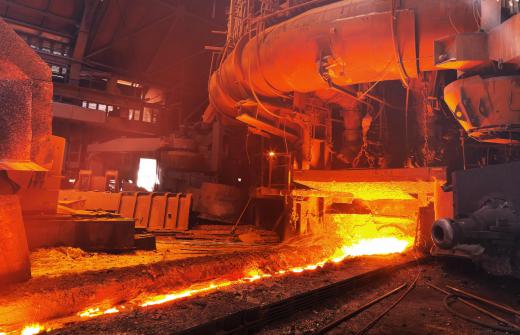Ingot is a term rather loosely applied to any mass of metal specifically cast from a molten state of known composition, weight, shape, and physical dimension. This uniformity is intended to aid in accounting for quantities of the metal which are cast, stored, or transported. A multitude of metals are commonly cast into ingot form including gold, silver, platinum and tin. Ingot designs include a wide variety of shapes and sizes defined by the intended function and metallurgical requirements of the end product.
Metals have been cast into shapes of known characteristics for as long as metallurgy has existed. From the ancient Chinese sycee to the gold, silver and lead ingots of the Roman Empire, the ingot was an accepted method of presenting valuable metals for storage and transportation. The practice of casting metals into standardized forms continues to today with the large majority of metal products starting life as ingots. The chief motivators behind the practice are the accounting and logistic benefits of producing products of uniform character. Each ingot consists of a mass of metal of known composition, size, shape, and weight which facilitates easy recordkeeping, storage and transportation.

The molds used for this purpose are more than mere containers for cooling molten metal. The physical characteristics of the finished ingot to an atomic level will depend on how the molds are designed. The crystalline structure and integrity of the finished product depends on the distribution of alloy additives, gases, and impurities during cooling, a process which is largely dictated by the mold design. Mold designs are therefore formulated to produce an ingot not only physically practical but metallurgically compatible with its intended end use. These considerations will dictate the shape, interior surface, and size of the mold as well as the position of the mold's filling access.

Ingots are typically cast at the foundry stage of production. The molten metal is generally poured straight from the furnace into the pre-prepared molds in either a single step or continuous process. Once the molten metal has solidified to a point where it may be manipulated, the finished item is ejected from the mold. From there it is typically moved to a cleaning area where surface contaminants such as slag, mold sand, and lubricants are removed. The ingot is then marked, if the process requires it, and moved to storage.
Most metals and alloys destined for sale or production processes are cast into ingots. These include gold, silver, tin, platinum, lead, aluminum, steel, and pig iron. Most ingots are formed as basic oblong shapes with tapered sides although their design may differ to accommodate transportation, storage, or production process requirements. Depending on the intended end use, their weight may vary from a couple of ounces to a hundred tons or more.
